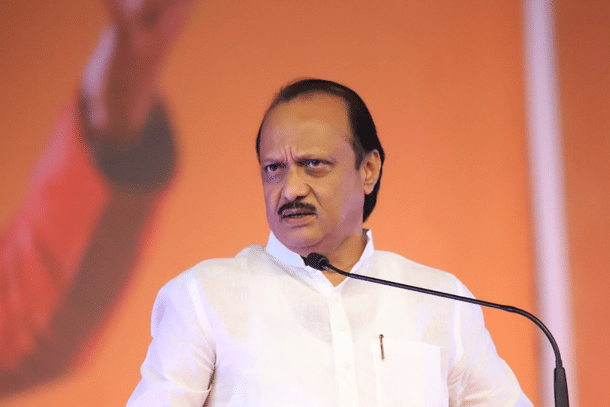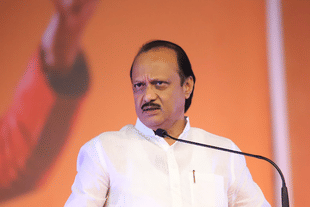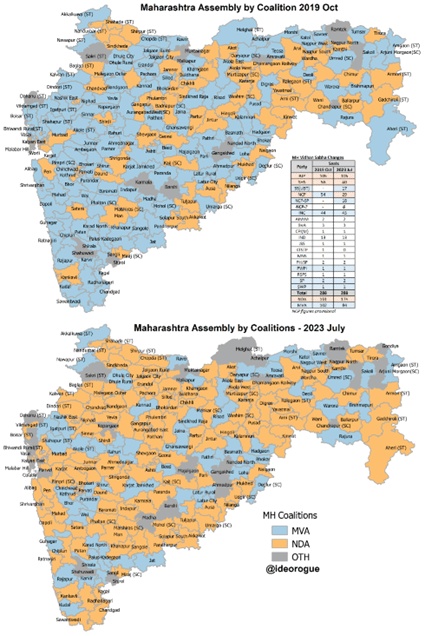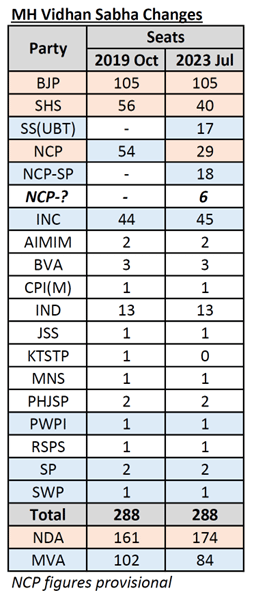Maharashtra
Numbers And Maps: Understanding Ajit Pawar's Switch
Venu Gopal Narayanan
Jul 07, 2023, 02:15 PM | Updated 02:12 PM IST
Save & read from anywhere!
Bookmark stories for easy access on any device or the Swarajya app.


How things change! In November 2019, the Bharatiya Janata Party (BJP) sat isolated in the Maharashtra assembly after having suffered two betrayals.
First, when the Shiv Sena under Uddhav Thackeray egregiously broke their pre-poll alliance with the BJP; and second, when Sharad Pawar of the Nationalist Congress Party (NCP) pulled the plug on a BJP-NCP government just days after it was formed with his blessings.
In July 2023, though, in a karmic reversal of fortunes, both the Shiv Sena and the NCP are now firm allies of the BJP, after both Uddhav Thackeray and Sharad Pawar were ignominiously chucked out of their parties.
Thackeray’s lieutenant Eknath Shinde is Chief Minister, and Pawar’s nephew, Ajit, is one of two Deputy Chief Ministers along with Devendra Fadnavis of the BJP.
A map contrasting the house position between 2019 and today says it all:

And this is a table detailing the changes in coalition strength (note that numbers are provisional since the NCP flux is yet to settle fully).

How did it come to this?
One popular view holds that Ajit Pawar’s sudden decision to join the BJP-Shiv Sena government was engineered by the BJP as insurance for both assembly and general elections which are due next year.
A BJP-NCP-Shiv Sena alliance under the National Democratic Alliance (NDA) banner has the potential to comprehensively sweep the state at both levels.
Another view is that Ajit Pawar chose to break with his uncle because he feared for his electoral survival under the leadership of his cousin, and elder Pawar’s daughter, Supriya Sule.
There is merit in both arguments.
Of the 54 seats which the NCP won in 2019, in alliance with the Congress, 16 are firewall seats; meaning that the NCP won them in the assembly elections of 2009, 2014, and 2019. Nine of these are with Ajit Pawar, six with the uncle, and one has yet to declare his political orientation.
Second, in 15 of these 54 seats, the NCP’s victory margin was under 5 per cent. In 9 seats, the margin was between 5-10 per cent.
These are discomfiting numbers for a state where the ‘Others’ routinely poll between 15-25 per cent in many seats. 12 of these 24 close wins are with Ajit Pawar, which means that the NDA should win them all, if they get their candidate selection right.
Indeed, the NCP registered thumping wins of over 50 per cent in only 25 seats, of the 54 they won, and the 121 they contested, in the 2019 assembly elections. And 14 of these MLAs are with Ajit Pawar.
So, not only has the strength been cut from under Sharad Pawar, but the NCP joining the NDA is also an excellent example of how an alliance between different vote bases leads to a high degree of vote transferability, and winning outcomes.
Of course, we don’t yet know how much of the NCP vote base Ajit Pawar will be able to retain, but whatever he can cobble together will do the trick in those seats where the NDA lost by small margins.
Another major impact of Ajit Pawar’s switch will be on the ‘Others’. Not many realise that the NCP and the Congress offered tacit support to a number of smaller parties and independents in 2019, by either not contesting, or by putting up weak candidates.
It is a long list, covering a tenth of the house strength of 288 seats. Raj Thackeray’s MNS won Kalyan Rural only because the NCP and the Congress didn’t contest. So too, the AIMIM in Dhule City (which was already a messy four-way affair); the Marxists in Dahanu; the JSS in Shahuwadi; and many independents.
In all, the ‘Others’ won 29 seats. That is a sizeable fraction which blocked up a quarter of the popular vote. However, now that the NCP is with the NDA, many of the ‘Others’ are going to get squeezed in the next assembly elections.
At a broader level, there is an inevitability to the nephew’s switch, which is separate from whatever personal frustrations may have rankled within Ajit Pawar, for having had to subsume his own political ambitions, and kowtow to his uncle and cousin for so long.
The first is the BJP’s stunning victory at Pandharpur in a 2021 assembly byelection. The temple town had been a Congress hold for decades, and personality-centric, with just two men representing the seat for the past four decades. Neither the BJP nor the Shiv Sena had ever done well here.
From there, to winning against a formidable combination of the Shiv Sena, Congress, and NCP, marked a turning of the tide.
The second factor is of course, Eknath Shinde’s decision to junk the Thackerays and go back to the BJP in 2022.
Combined together, the writing on the wall was legible to an astute survivor like Ajit Pawar, and hence the aspect of inevitability around his move. Why he waited till July 2023 is, therefore, only a matter of detail.
Either way, the nature of politics in Maharashtra has changed dramatically, perhaps irrevocably, and it is possibly because politicians like Ajit Pawar sense that, while the BJP can be bested on occasion, Hindutva can’t.
Venu Gopal Narayanan is an independent upstream petroleum consultant who focuses on energy, geopolitics, current affairs and electoral arithmetic. He tweets at @ideorogue.




